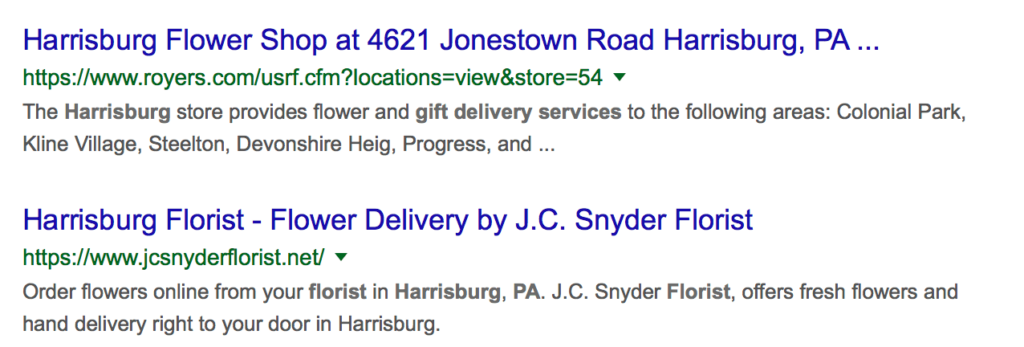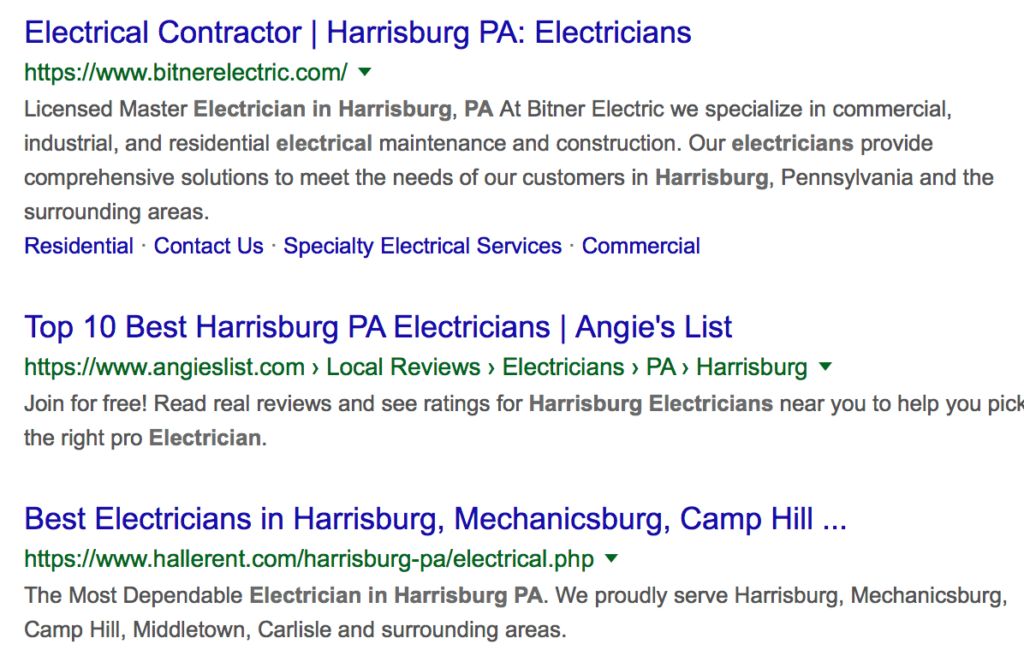-
 11 min. read
11 min. read
-
 Macy Storm
Macy Storm Content Marketing Consultant
Content Marketing Consultant
- Macy is a content marketing consultant with over five years of experience creating content for dozens of industries including home services, recreation, and education. She’s written about every marketing topic under the sun, from SEO to AI to email marketing. Her work has been featured by Search Engine Journal, HubSpot, Entrepreneur, Clutch, and more. In her free time, Macy enjoys crafting, reading comic books, and walking her dog Daisy.
Did you know that 89% of marketers say search engine optimization (SEO) is successful? If you’re looking for a method that will help you drive more traffic for your business and help you earn more conversions, SEO is the strategy. This marketing tactic is an excellent way for you to help your business grow online.
On this page, we’ll provide you with a search engine optimization tutorial to help you own this strategy and make it work for your business. If you want to learn more about how SEO will help your business grow, contact us online or call us today at 888-601-5359 to speak with a strategist.
Understanding SEO: What is SEO, and how does it work?
Before we dive into the tutorial on how to do SEO, we first want to cover what SEO is and how it works. SEO is the process of boosting your website’s ranking in the search results to reach more leads interested in your business.
Users conduct searches to find relevant information. If you want these users to find your business, you must optimize your listing to help them find you.  So, how do you get your business to appear in relevant search results?
So, how do you get your business to appear in relevant search results?
First, you’ll start by optimizing your site. There are many optimizations you can do to improve your ranking, which we’ll dive into later. Once you optimize your page, Google will crawl your site.
Crawling your site allows Google to understand the context of your page and help it appear in the relevant search results. SEO is an excellent method for helping your business appear in relevant search results. Now that you have a basic understanding of SEO let’s dive into the search engine optimization tutorial.
Practical SEO tutorial: How to spruce up your pages for search engines
If you want to know how to do SEO yourself, start with this tutorial on how to improve your search engine optimization.
Let’s dive into the different aspects you need to know to have a strong SEO campaign.
Step one: Conduct keyword research
To start creating an effective SEO campaign, you must find keywords for your listing. Users enter keywords into the search bar to generate relevant results. So, if you want your listing to appear in the right search results, you must start by conducting keyword research.
Numerous keyword research tools will help you find relevant keywords for your listing. You can use tools like Keyword Tool or Buzzsumo to help you choose the right keywords for your site’s. An essential part of the SEO tutorial is choosing the right keywords.
If you want to drive quality traffic to your page effectively, focus on finding long-tail keywords. Long-tail keywords contain three or more words. An example of a long-tail keyword is “electricians in Harrisburg, PA.” This key term is specific and tells you what your audience wants to find.
 These keywords are better for your campaign because they attract people who are most interested in your business. If someone searches “electricians,” it’s challenging to know what they’re hoping to find in terms of content. They could be looking for a local electrician, how to become an electrician or information on what electricians can do.
These keywords are better for your campaign because they attract people who are most interested in your business. If someone searches “electricians,” it’s challenging to know what they’re hoping to find in terms of content. They could be looking for a local electrician, how to become an electrician or information on what electricians can do.
You don’t want to attract traffic to your page that isn’t interested in hiring your business or buying your products. By choosing relevant keywords, you’ll help your listing appear in more relevant search results.
Step two: Integrate keywords
The next step in the search engine optimization tutorial is to integrate your keywords into your pages. Keyword integration will help you appear in the right search results for your business.
When you integrate keywords onto your pages, take care to insert them on the correct pages. For example, don’t use a keyword throughout your page if it’s not relevant to that page. You shouldn’t simply stuff a page with your target keyword unless that page provides relevant information.
 As you integrate keywords, you should also take care as not to overuse them. This practice leads to keyword stuffing, which negatively impacts your ranking. Overusing a keyword won’t help your page rank better for that the keyword.
As you integrate keywords, you should also take care as not to overuse them. This practice leads to keyword stuffing, which negatively impacts your ranking. Overusing a keyword won’t help your page rank better for that the keyword.
Instead, it will damage your ranking because it’s a practice that goes against Google’s standards. There are numerous places you’ll want to integrate keywords, including:
- Title tag
- H1 header
- Meta description
- H2 and H3 headings on your page
- Within the text
If you integrate your keywords naturally, you will help your pages appear in the appropriate search results.
Step three: Create compelling title tags
Each time you create a new page, you need a compelling title tag for it. If you take anything away from this SEO tutorial, know that your title tag is one of the first things your audience sees in the search results. Your title tag influences whether your audience will click on your listing.
 So, how do you create a compelling title tag? The first step is to integrate your keyword into the beginning of the title tag. You want your audience to see the keyword immediately to know that your listing is relevant to their search query.
So, how do you create a compelling title tag? The first step is to integrate your keyword into the beginning of the title tag. You want your audience to see the keyword immediately to know that your listing is relevant to their search query.
It also helps search engines understand the context of your page to determine relevancy. Next, you’ll want to create a title tag that is descriptive and tells your audience what to expect. Whether it’s an informational article or a list of how to do something, you want to let your audience know.
Lastly, make your title tag unique and compel your audience to click. After all, your title tag is the first impression of your article. You want to make it interesting and relevant enough that your audience clicks on it.
Step four: Create SEO-friendly URLs
The next part of this search engine optimization tutorial will cover URLs.
Whenever you create new pages, you must create an SEO-friendly URL. An SEO-friendly URL is clear and easy to remember.  In this example, you can see the URL is clear and easy to remember.
In this example, you can see the URL is clear and easy to remember.
The user searched “types of cookies,” and the URL has the keyword integrated at the end. Not only will users remember this URL, but search engines will know this page is about types of cookies. So, what does a lousy URL look like?
 While this URL does have the keyword at the end of the address, the middle part of the address is concerning. The number sequence “2069451” is difficult to remember and doesn’t have any relevance to the page. Search engines won’t know what these numbers mean, either.
While this URL does have the keyword at the end of the address, the middle part of the address is concerning. The number sequence “2069451” is difficult to remember and doesn’t have any relevance to the page. Search engines won’t know what these numbers mean, either.
By having a clean URL, you’ll help search engines understand your page and help more leads remember your page.
Step five: Create quality content
If you want to have an effective SEO campaign, you must create quality content. Content marketing is the best way to help you drive more traffic to your page and reach people interested in your business. There are numerous types of content you can create with content marketing.
These formats include blogs, videos, infographics, ebooks, and more. You’ll want to use an abundance of these content formats to keep your audience engaged.  When you create content, you want to provide your audience with valuable information.
When you create content, you want to provide your audience with valuable information.
Don’t create short content that only skims the surface of a topic. Your audience wants in-depth, quality content that answers their questions and provides them with the information they need. As you create your content, focus on industry-specific topics.
When you concentrate on industry-specific content, you drive leads to your page that are interested in your business. It ensures that you only drive leads to your page that are interested in your company. Having a solid content marketing plan will help you improve your SEO ranking.
You’ll drive more traffic to your page and keep leads on your page longer.
Step six: Focus on the user experience
The next part of this SEO tutorial focuses on user experience. User experience is a crucial component of SEO because the positive user experience is essential to keeping leads on your site. So, how do you create a positive user experience for your audience?
- Responsive design: Responsive design enables your site to adapt to whatever device a user is using. This optimization provides your audience with a more positive experience because it provides them with the best version of your site for the device they’re using.
- Adding photos and videos: Users don’t want to visit your site to find walls of text. Your audience wants to see visuals that add points of interest to your page and catch their attention. Visuals, like photos and videos, provide a better user experience by breaking up the text on your page and creating a different way to deliver information.
- Improving page speed: Users hate to wait for slow-loading pages. If you want to provide a positive experience for your audience, you must ensure your pages load quickly. You can use Google PageSpeed Insights to figure out where you must make the changes on your own, or you can invest in page speed services from a digital marketing company.
When you provide your audience with a positive experience, they’re likely to stay on your pages longer. Longer dwell time will boost your website’s ranking and help you drive more people to your page. Keep in mind that there are tons of website optimization tools out there to help you provide the best possible user experience!
Step seven: Internal linking
Internal linking is the last part of this search engine optimization tutorial we’ll cover.
When Google crawls your site to index your pages, it doesn’t always find every page. You need to help Google discover new pages on your website. When you link internally, Google bots can follow those links to your pages and index those linked pages for you.
 These internal links also keep users on your page longer. When they read through your content, they can find links to pages that provide them with additional information about specific topics. It’s a great way to increase dwell time on your site.
These internal links also keep users on your page longer. When they read through your content, they can find links to pages that provide them with additional information about specific topics. It’s a great way to increase dwell time on your site.
If you want to see effective results with your campaign, use internal linking to keep leads on your page longer.
Start building your SEO campaign today
SEO is an excellent method for helping you reach new people interested in your business. This strategy drives more traffic to your page to continue to grow your company. This SEO tutorial will help you get started with your campaign.
If you aren’t sure you want to run your campaign on your own, you’re not alone. At WebFX, we have over 29 years of experience and a team of 500+ experts that can help you run your SEO campaign. We are among the best digital marketing agencies with locations in cities like:
To learn more about how we can help you create an SEO campaign that works for your business, contact us online or call us today at 888-601-5359 to speak with a strategist.
-
 Macy is a content marketing consultant with over five years of experience creating content for dozens of industries including home services, recreation, and education. She’s written about every marketing topic under the sun, from SEO to AI to email marketing. Her work has been featured by Search Engine Journal, HubSpot, Entrepreneur, Clutch, and more. In her free time, Macy enjoys crafting, reading comic books, and walking her dog Daisy.
Macy is a content marketing consultant with over five years of experience creating content for dozens of industries including home services, recreation, and education. She’s written about every marketing topic under the sun, from SEO to AI to email marketing. Her work has been featured by Search Engine Journal, HubSpot, Entrepreneur, Clutch, and more. In her free time, Macy enjoys crafting, reading comic books, and walking her dog Daisy. -

WebFX is a full-service marketing agency with 1,100+ client reviews and a 4.9-star rating on Clutch! Find out how our expert team and revenue-accelerating tech can drive results for you! Learn more
Try our free Marketing Calculator
Craft a tailored online marketing strategy! Utilize our free Internet marketing calculator for a custom plan based on your location, reach, timeframe, and budget.
Plan Your Marketing Budget

SEO Success with KOA

Proven Marketing Strategies
Try our free Marketing Calculator
Craft a tailored online marketing strategy! Utilize our free Internet marketing calculator for a custom plan based on your location, reach, timeframe, and budget.
Plan Your Marketing Budget
What to read next





